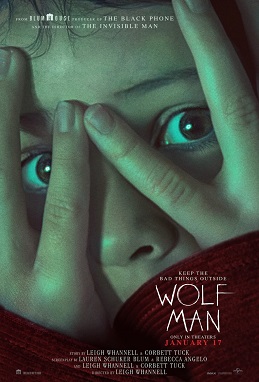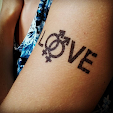Sinners
In 1932 twin brothers Smoke and Stack (both Michael B. Jordan) return home to Mississippi to open a juke joint with money stolen from Chicago gangsters and the help of people of the local community, most notably their younger cousin Sammie (Miles Caton), a blues singer. Their times of strife are far from over, as a sinister enemy rallies in the night.
Spoilers from here on out
The trailer alone is remarkable. Tense. Deeply atmospheric. This one, the first one, doesn’t even show the monster. It doesn’t tell us that it’s vampires. That’s not necessary to completely and utterly pull you in. And in contrast to 28 Years Later, this movie lives up to its trailer’s promise.
Sinners is a celebration of Black music and art. It is a caution against assimilation and its mechanisms. It is beautifully shot and wonderfully acted. Its themes are relevant and communicated clearly. There’s so much in it that’s worth discussing, so be aware that I will only scrape the surface here. (Go check out especially Black creators because there’s some stuff I, as a white European, just cannot get fully.)
Despite Smoke and Stack being front and center in the trailer and poster, one could very well argue that Sammie is the true protagonist. The movie begins and ends with him and it is his gift for music that plays a fundamental role. His music is the blues, which he pursues against his preacher father’s wishes. The blues is - in contrast to Christianity - a connection to his African forebears. It wasn’t impressed on him by the colonizing force and where Christianity is a tool of assimilation, the blues is a tool of community and self-expression, of celebrating your culture. Sammie’s gift isn’t just that he plays and sings very well - and will thus entice people to the juke joint when he performs - his gift transcends time and place and calls forth ancestors and descendants alike in one of the most gorgeous scenes I can ever remember seeing in the theater. Still today, when I watch the video I get goosebumps.
His music, however, does not only call out into time but also to a vampire in search of a culture he lost. Remmick (Jack O’Connell) is Irish, a people notable for their colonization by England and discrimination in the US. It’s not an accident that the house he finds refuge in after being pursued by Choctaw hunters (another great detail, as the Choctaw and the Irish are generally historical allies) belongs to a KKK couple. He uses an American accent with them and immediately builds an ‘us’ - white people - vs ‘them’ - the others - narrative to save his skin. As a vampire he has power but he no longer has a connection to his distinct culture. So when he hears Sammie sing, he recognizes his gift for what it is and wants it for himself to replace what he has lost (‘I want your stories. I want your songs. And you gon’ have mine.’). He pretends to be on our protagonists’ side, warning them about an impending KKK attack in the morning, empathizing with their struggle, stressing that he understands, but while his words ring true, his actions reveal his insidious goals. For one, he’s not giving anyone a choice here, he threatens, he stalks the night, he turns people violently and against their will. Furthermore, what he offers isn’t truly community, despite what he might claim. Remmick has everyone sing and dance with him, sing an Irish song, dance an Irish jig, even though he is the only Irish person there. As the quotes illustrate, he wants to take what Sammie has and make it his own, something that reflects how so much pop culture and music originated with Black people and was adapted by the dominant culture without giving credit or appreciation to its roots.
Delta Slim (Delroy Lindo), another blues musician in the movie, says pointedly ‘see, white folks, they like the blues just fine. They just don't like the people who make it’. Which is still true today about too many things.
In the end, it is the blues - represented by the guitar - that saves Sammie as the Lord’s prayer is simply echoed by Remmick (Christianity again as a vehicle for colonization and separating Remmick, too, from his culture) and it is the blues to which he’ll dedicate his life. Because while assimilating - here, turning into a vampire - may grant you boons - Stack as a vampire, for example, is still around decades later and seemingly fine - it can never set you free.
Before I close out. I would be remiss if I didn’t mention Wunmi Mosaku, whose character Annie, is such an important figure. As a Hoodoo practitioner, she is a counterweight to the assimilating force of Christianity and presents continuity and community. Her relationship with Smoke is an emotional throughline that made me cry.
Add-On: Watch this talk from fantastic youtuber F.D. Signifier about Sinners and its place in the entertainment industry: "The Hidden Truth Behind Sinners"
_poster.jpg)








